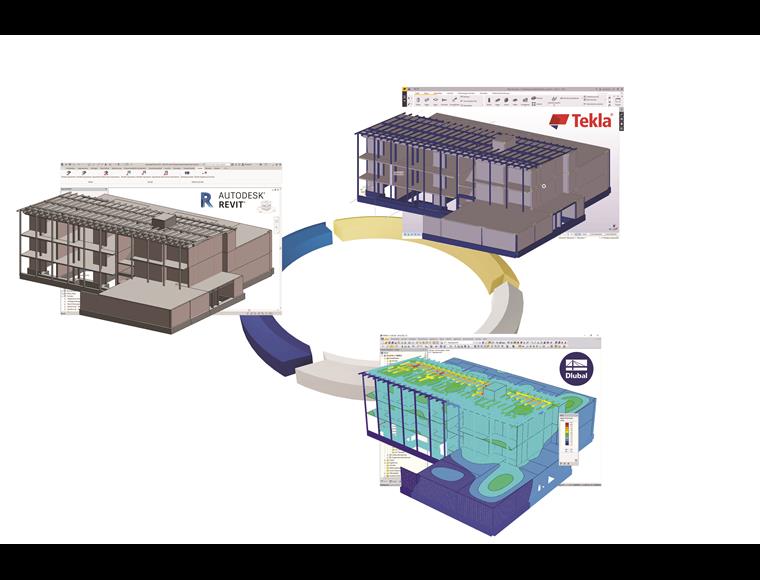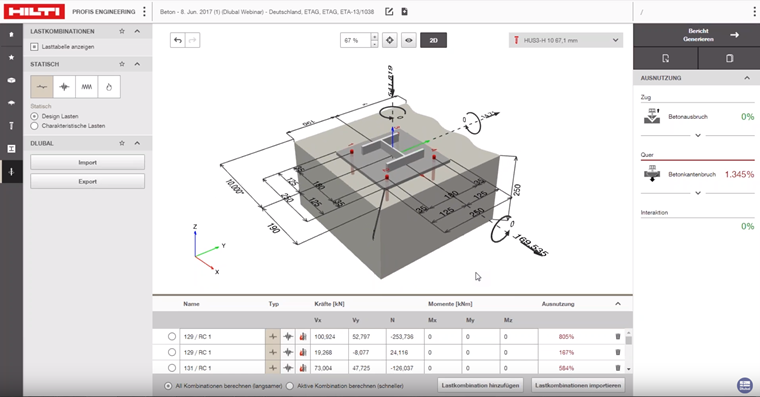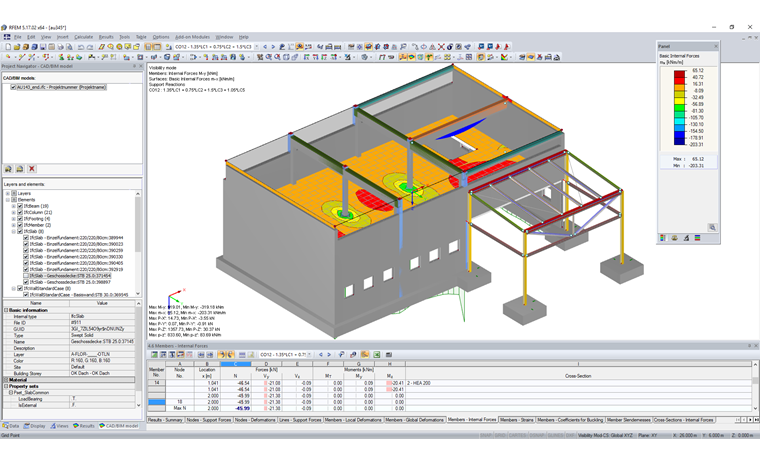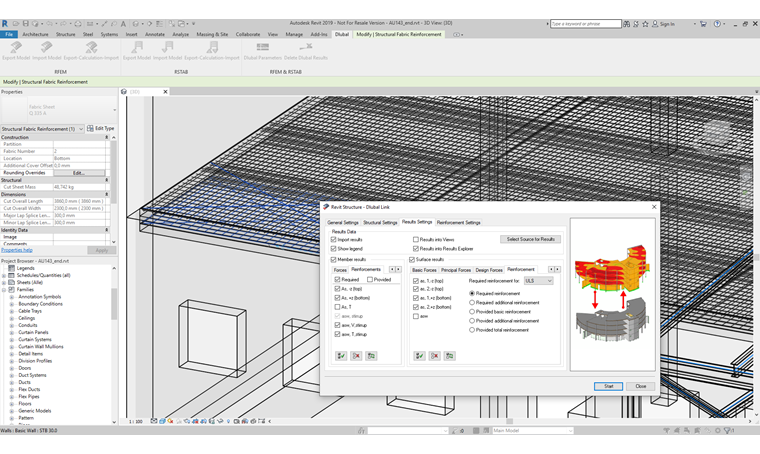Understanding the Structural System
IFC structures can be imported into free viewers. The visualizations usually indicate the selected materials, cross-sections, and wall and slab thickness. Available spaces and limitations become apparent, and it is then possible to better estimate potential conflict situations before the detailing process.
Geometry and Dimensions of the Supporting Structure
In the past, it was necessary to read plans and collect ground plans, views, and sections. Now, it is possible to work visually. The situation is ideal if data (for example, IFC or other formats) can be imported and a structural model can be generated directly. However, the IFC coordination model does not provide supports, hinges, or loads. This is still the engineer's job.
BIM Avoids Errors
Digitization is also present in the building industry. A digital twin indicates possible issues before setting up the site facilities. Even if we prefer not to admit it, humans usually make more mistakes than computers and related software. Efforts to introduce BIM also push the standardization of structural components. Manufacturers already offer BIM libraries for download that can easily be imported into BIM software. More standards lead to easier handling, time savings, and fewer sources of error.
BIM Software is Open
BIM Software needs interoperability. Interfaces are important. The ideal situation would be one in which all programs supported a common data exchange format. IFC is well on the way to becoming this open standard. In addition to IFC, there are currently other options for exchanging data. However, using direct options for data exchange means that a certain software environment is defined, but these software solutions are optimally adapted to the software that is used. When the decision is made, in turn, to use software that offers few options for data exchange, the risk arises that the software used for the project is not compatible. Therefore, BIM currently offers not only IFC, but many other data exchange formats. These include formats like DXF/DWG, Step, DSTV PSS (*.stp), SNDF, CIS/2, ISM, and Excel.
If there are interfaces that are easily programmable, the engineer can benefit from the complete automation of planning processes, which means that exhausting, repetitive tasks are done automatically. It is necessary to have basic programming skills or to find a person who is able to carry out the programming.
BIM Generates Synergy Effects
There is no one-size-fits-all software that offers solutions for all issues. Even if there were such a program, it would be so manifold that it would not be very easy to use. Therefore, there will always be isolated solutions that have an advantage over the all-in-one solution. The advantages of both solutions can be combined with BIM, and working more effectively is possible. For example, it is possible to export design internal forces for the dimensioning of Hilti anchors (Hilti PROFIS Engineering) from the RFEM structural analysis program by means of BIM integration.
BIM Allows Integrated Documentation of Structural Analysis Results
BIM stands for interdisciplinary coordination throughout all work phases. To evaluate the feasibility at an early stage or for further processing of the results from other companies or other service providers, it may be helpful to display the structural results in the BIM model or make it available there.
Additionally, there is the option to combine the specific strengths of BIM software in planning with those of typical structural engineering software. It is thus possible to display items of a structural model in the BIM model or, depending on the application, directly generate reinforcement drawings based on the structural model. It is also possible, for example, to export the design values from the FEA software RFEM directly as 3D reinforcement into Revit.
BIM is Steadily Becoming Obligatory
Anyone who is unable to work with BIM models from BIM software is unable to support the BIM process. In many countries, using BIM methods for public sector projects is already mandatory. The engineer therefore runs the risk of losing ground in the construction sector, and preference will be given to other engineering offices. Conversely, BIM offers the opportunity to stand out from one's competitors and acquire better-paid orders.
BIM Makes an Employer Attractive
In addition to the clear advantages in daily work, there are some incidental effects. It is increasingly difficult to find skilled workers on the job market. Are you also looking for employees? Innovative working practices help here, because employees prefer to use future-oriented technologies such as BIM rather than old technologies. This effect should not be underestimated.
Taking a Step Forward with BIM
Now is the right time to take advantage of the opportunities of BIM in structural analysis, as well. Getting started pays off and sets the course for the future. BIM is not a temporary phenomenon. It is time for structural engineers to deal with BIM more intensively.




